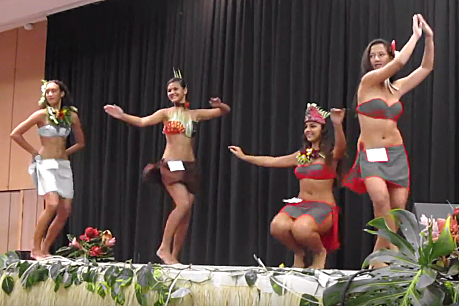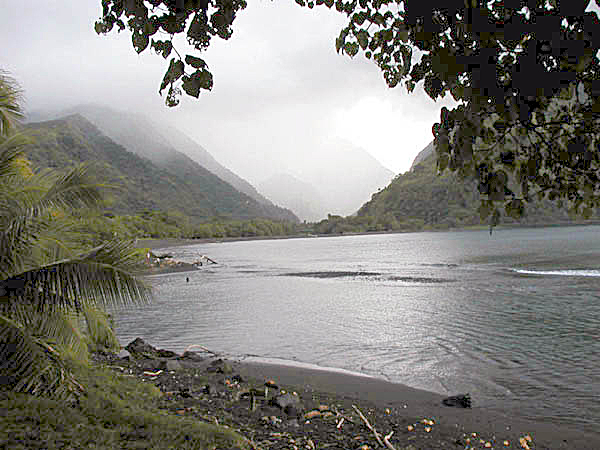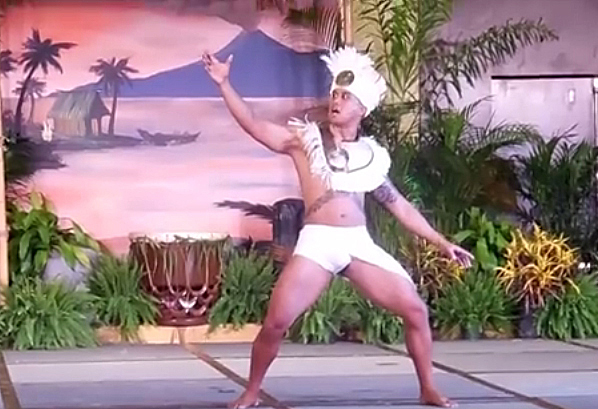Puritanical religious authorities tried to stamp out traditional Tahitian dancing in an earlier era, but according to one website devoted to the subject, ori Tahiti, Tahitian dance, is making a strong comeback. It is, as the website says, “a typical expression of the Polynesian soul.”

The website, TahitiDanceOnline.com, published a post on December 23, 2015, by someone named Tana, who wrote that dance is an extremely important expression of Tahitian society and culture. Tahitians dance for fun, for sport, for passion, for seduction, and for the simple pleasure of belonging to a group. They dance simply because they are Tahitians, Tana wrote—it is a way of expressing their sense of themselves.
Last week, French Polynesia’s major daily newspaper, La Dépêche de Tahiti, published a story about a dance program in some schools that is attempting to preserve and help revive this important Tahitian cultural symbol.
The ori Tahiti program is flourishing in the schools in the Tairapu area, the peninsula called Tahiti Iti that sticks out to the southeast of the main island. The program, started at the end of February by a dance school, has been developed in seven elementary schools located both in Taravao, a community on the isthmus connecting the peninsula to the larger part of the island, and on the rest of Tahiti Iti.
Called “‘A’ ori na mai,” the program is supported by a local association, local officials, and the Conservatoire artistique de la Polynésie française. Fourteen experts are training 184 students in the participating schools. The students are spending two hours per week in the training, which will last until June.

The newspaper quoted one of the coordinators of the program at a school in Tautira as saying that, while dancing is fun for the children, the gestures associated with the traditional Tahitian dance also have many meanings. It is important as a “part of our cultural heritage (partie de notre patrimoine culturel),” the individual said.
The other coordinator in the Tautira school indicated that dancing is an integral part of its overall educational strategies. Lavaina Teuira, teacher and facilitator for Polynesian culture and languages for the school district, told the paper, in the wording of a Google translation, “the theme of this learning, it is the culture.” She added, “Dance allows [us] to link with the language and learn vocabulary in a different way, focusing on the origin and meaning of words…”
The organizers of the program, particularly the choreographer who is running it, are seeking the support of everyone living on the peninsula, particularly the parents of the children involved. After only a month of operation so far, the program already appears to be growing successfully, at least as measured by the interest of the students, who seem motivated to learn more.
A representative of the Toerefau School in the village of Toahotu said that working with the kids is “super rewarding (super enrichissant).” A performance of Tahitian dance by the participating school students will be held on June 11 at l’Institut de la jeunesse et des sports de Polynésie française, adjacent to the high school in Taravao.

Robert I. Levy, in his path-breaking book (1973) on the Tahitians and their peacefulness, commented on how the “long shadow of the Puritan position on games and amusements still falls on Piri and other rural villages (p.23-24).” He described how some traditional dances were preserved only because yearly festivals, fostered by the government, helped to keep them alive. He might be surprised to witness the renaissance of traditional dance in rural areas of the Society Islands today.
Interest in preserving traditional Polynesian cultures is not limited to Tahiti. The current issue of the new journal IK: Other Ways of Knowing (vol. 1, no.2) features two articles on other Polynesian societies and the importance of dance and music to them: Sarah Watts, “Hula as a Way of Knowing,” p.123-131, and Ann C. Clements, “Maori Waiata (Music): Re-Writing and Re-righting the Indigenous Experience,” p.132-149. The issue is freely available on the Internet.